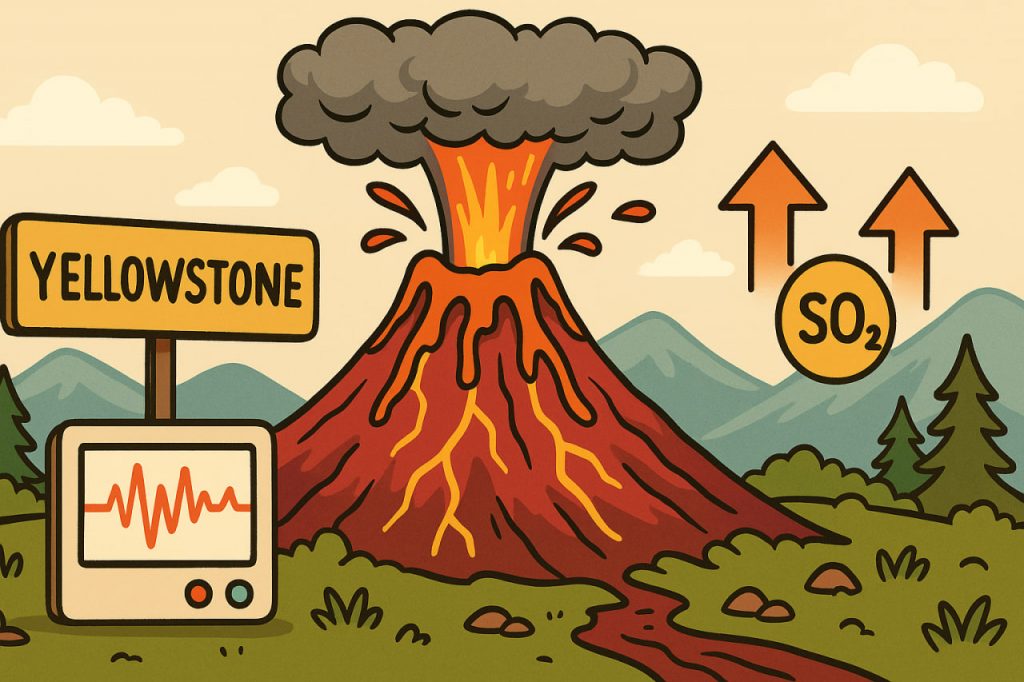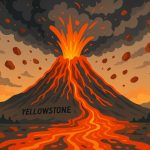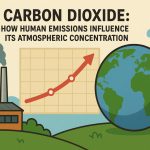The Yellowstone supervolcano, located in Wyoming, USA, is one of the largest and most closely monitored volcanic systems in the world. Unlike ordinary volcanoes, it consists of a massive caldera, a depression formed by previous colossal eruptions. Its past eruptions, the most recent occurring about 640,000 years ago, were among the most powerful on Earth. While scientists believe a super-eruption in the near future is highly unlikely, studying its preparation helps us understand potential warning signs and global consequences.
Early Signs of Preparation
The first indications of a Yellowstone eruption would likely involve seismic activity. Rising magma beneath the caldera would cause swarms of earthquakes as it fractured the crust. Scientists would also observe ground deformation, with areas of Yellowstone lifting or sinking. Increased emissions of volcanic gases such as carbon dioxide and sulfur dioxide would be detected by monitoring stations. These signals would unfold gradually, giving scientists a chance to identify unusual activity long before a major eruption.
Magma Movement Beneath the Surface
During preparation, large amounts of magma would slowly move toward the surface, filling underground reservoirs. Advanced imaging techniques like seismic tomography would reveal these changes. This process could last years or even decades, as pressure builds beneath the caldera. The slow rise of magma would alter the hydrothermal systems of Yellowstone, causing more frequent geyser eruptions and hot spring changes. These visible signs would be clear indicators that the volcanic system is becoming more active.
Release of Gases and Environmental Effects
One of the most noticeable warning signs would be an increase in volcanic gas emissions. Rising magma would release carbon dioxide, which could accumulate in low-lying areas and pose risks to animals and humans. Large amounts of sulfur dioxide might also escape, contributing to acid rain and atmospheric changes. In the long term, if these emissions grew stronger, they could alter regional climate patterns. These processes would begin long before any explosive eruption occurred.
Impact on Local Ecosystems and Humans
As activity intensified, Yellowstone’s unique ecosystem would experience stress. Forests, rivers, and geothermal features would be directly affected by increased heat and gas emissions. Wildlife might migrate away, and tourist access to the national park would be restricted for safety reasons. Local communities could face air quality problems and water contamination. Emergency preparedness plans would be activated, including possible evacuation strategies for nearby populations.
Global Concerns and Scientific Monitoring
While preparation stages would primarily affect the Yellowstone area, global attention would be focused on the site. International scientific teams would monitor every detail of seismic activity, gas release, and surface changes. The potential for ash clouds and climate effects would raise worldwide concern. However, scientists emphasize that even during preparation, smaller eruptions or geothermal activity are more likely than a catastrophic super-eruption. Careful observation ensures that humanity is not caught off guard by sudden changes.
Conclusion
Preparation for a Yellowstone supervolcano eruption would involve seismic swarms, rising magma, ground deformation, and increased gas emissions. These processes would unfold gradually, providing warning signs detectable by modern technology. While the chances of a super-eruption in the near future are extremely low, understanding its preparation helps scientists and societies plan for potential scenarios. Studying Yellowstone is also crucial for learning how giant volcanic systems work and how they might impact life on Earth.
Please don’t wait for trouble to come to your home – prepare for it in advance. If you’re interested in how to do this, please leave a comment.
Glossary
- Supervolcano – a massive volcano capable of producing an eruption with global effects.
- Caldera – a large depression formed when a volcano collapses after an eruption.
- Seismic activity – earthquakes and tremors linked to underground magma movement.
- Magma – molten rock beneath the Earth’s surface.
- Carbon dioxide (CO₂) – a volcanic gas that can accumulate in dangerous concentrations.
- Sulfur dioxide (SO₂) – a volcanic gas that contributes to acid rain and climate effects.


